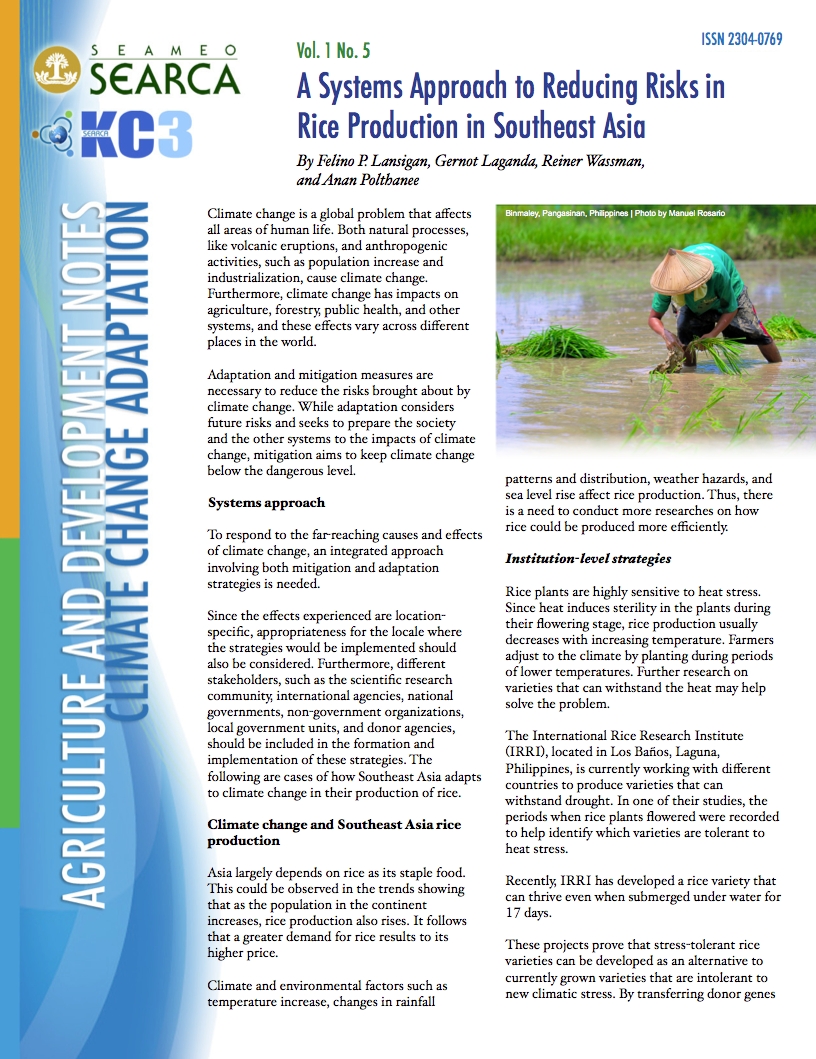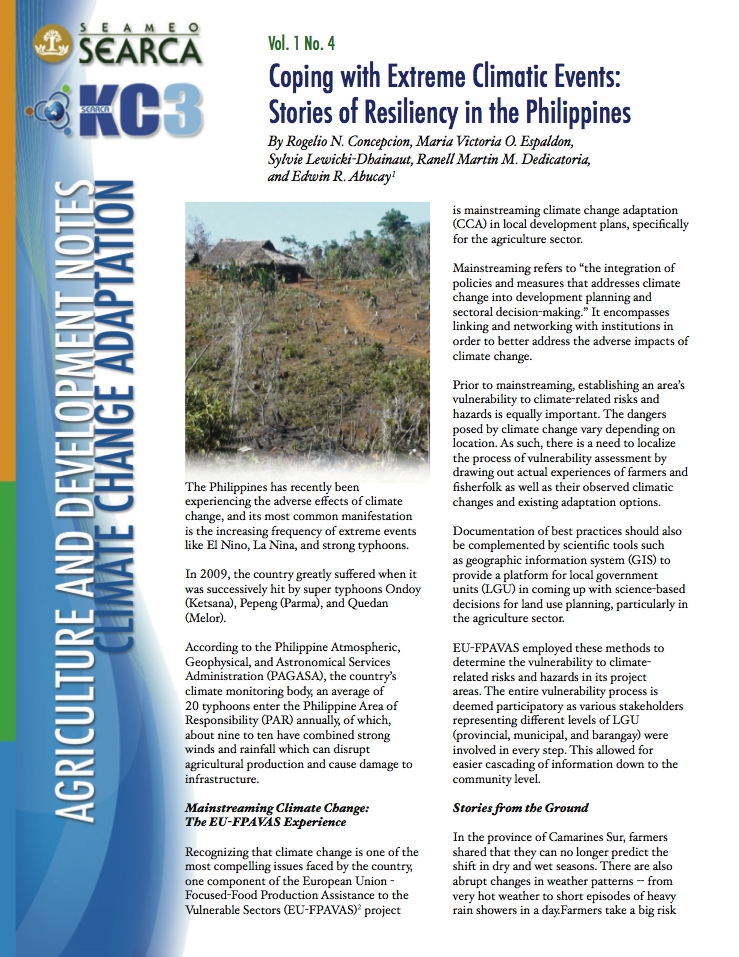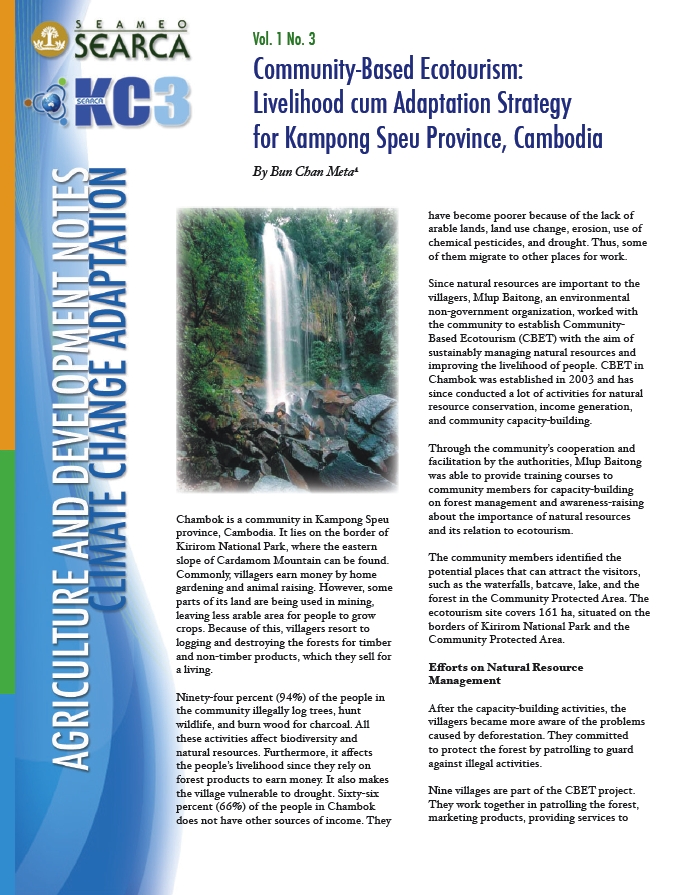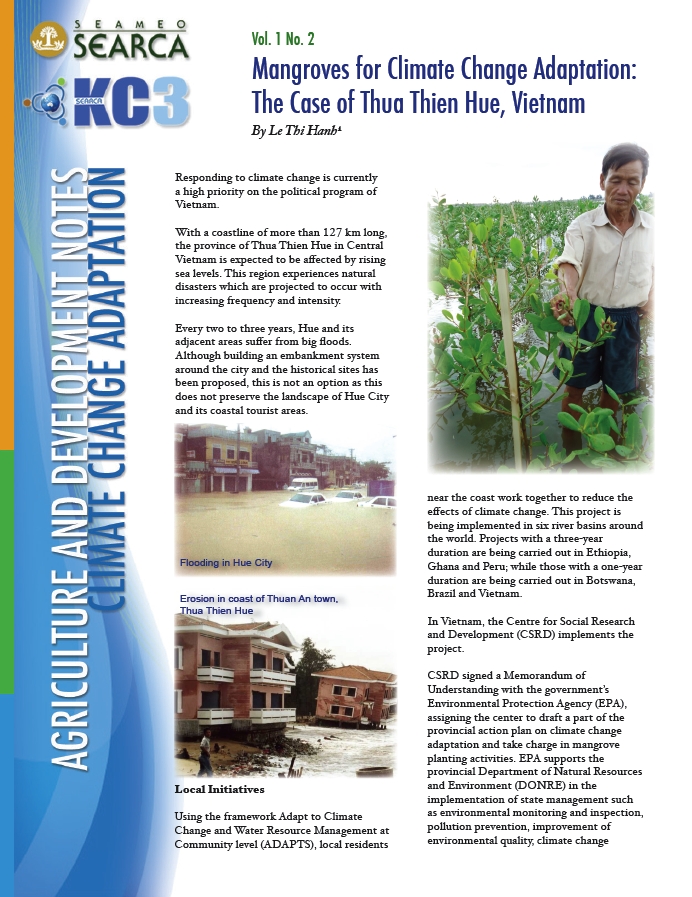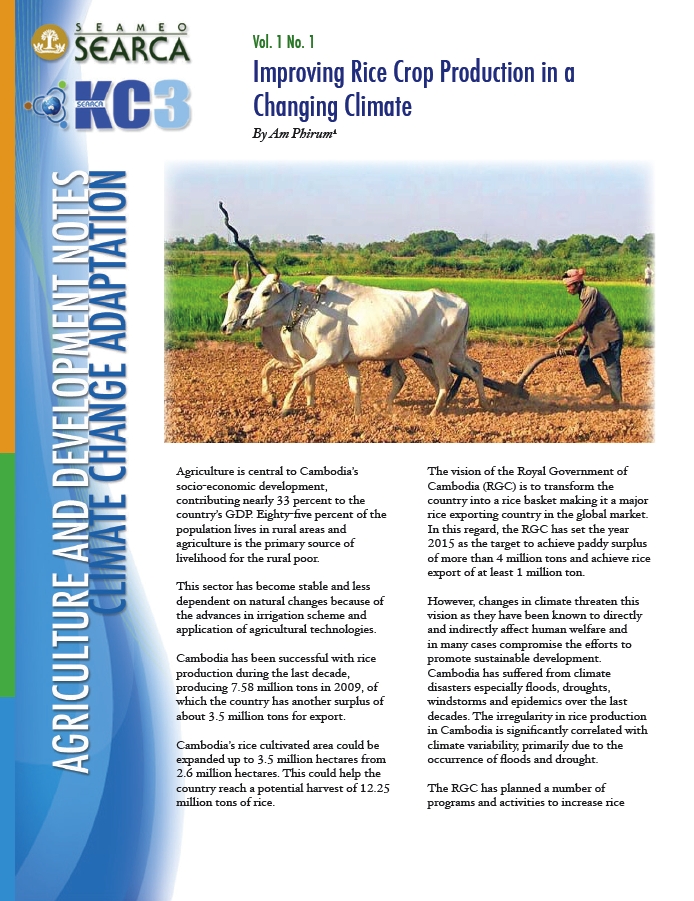Adaptation Notes
Flooding is a prevalent problem in the Philippines, especially now that there are heavier rains due to climate change. Experience has shown that being prepared for a disaster can minimize casualty and damage. However, for people living in remote areas, preparedness could be a problem, as they do not usually have access to radio, TV, mobile phones, and other media that can immediately warn of possible floods and landslides. As such, an effective early warning system needs to be designed…
Climate change is a global problem that affects all areas of human life. Both natural processes, like volcanic eruptions, and anthropogenic activities, such as population increase and industrialization, cause climate change. Furthermore, climate change has impacts on agriculture, forestry, public health, and other systems, and these effects vary across different places in the world. Adaptation and mitigation measures are necessary to reduce the risks brought about by climate change. While adaptation considers future risks and seeks to prepare the…
Southeast Asia relies heavily on its agricultural capacity, species diversity, and natural resources. However, with the whole region experiencing the impacts of climate change, the need to identify strategic roles for climate change adaptation and mitigation in Southeast Asia rises. Therefore, initiatives, policies, and new technologies are needed to help different countries in the region manage the effects of climate change. The challenge is in contextualizing and localizing international policies in designing and implementing projects on climate change adaptation and…
Albay, Philippines is a province located along the eastern coast of the country, facing the Philippine Sea and the Pacific Ocean. With a land area of 2, 552 square kilometres, it is considered the second largest in the Bicol Region. Aside from being the second largest province in the region, Albay is also known as the “Vatican of Disasters” of the Philippines. Various natural phenomena such as typhoons, landslides, volcanic eruptions, and tsunamis have plagued the area. As a…
Dumangas, Iloilo is a coastal town located in the island of Panay, Visayas, Philippines with most of its area devoted to agriculture and fisheries. However, the town experiences two extreme conditions: drought during the dry season, and flooding during the rainy season—where for the latter, 65% of the total area of Dumangas is usually inundated. Consequently, farmers experience difficulty in monitoring and maintaining their crops. As the local government’s initial step to help the farmers adjust to the adverse…
One of the oldest towns in Quezon, Philippines is Infanta—a first class municipality3 serving as home to a population of more than 60,000. Infanta is located on the eastern coast of the northern island of the Philippines. It directly faces the Pacific Ocean and the Sierra Madre mountain range, which makes it a site vulnerable to hydro-meteorological disasters and sea level rise. For their livelihood, residents of Infanta rely on its agricultural, fisheries, trade, and services sector. On 29 November…
The Philippines has recently been experiencing the adverse effects of climate change, and its most common manifestation is the increasing frequency of extreme events like El Nino, La Nina, and strong typhoons. In 2009, the country greatly suffered when it was successively hit by super typhoons Ondoy (Ketsana), Pepeng (Parma), and Quedan (Melor). According to the Philippine Atmospheric, Geophysical, and Astronomical Services Administration (PAGASA), the country’s climate monitoring body, an average of 20 typhoons enter the Philippine Area of Responsibility…
Chambok is a community in Kampong Speu province, Cambodia. It lies on the border of Kirirom National Park, where the eastern slope of Cardamom Mountain can be found. Commonly, villagers earn money by home gardening and animal raising. However, some parts of its land are being used in mining, leaving less arable area for people to grow crops. Because of this, villagers resort to logging and destroying the forests for timber and non-timber products, which they sell for a living.…
Responding to climate change is currently a high priority on the political program of Vietnam. With a coastline of more than 127 km long, the province of Thua Thien Hue in Central Vietnam is expected to be affected by rising sea levels. This region experiences natural disasters which are projected to occur with increasing frequency and intensity. Every two to three years, Hue and its adjacent areas suffer from big floods. Although building an embankment system around the city and the historical…
Agriculture is central to Cambodia’s socio-economic development, contributing nearly 33 percent to the country’s GDP. Eighty-five percent of the population lives in rural areas and agriculture is the primary source of livelihood for the rural poor. This sector has become stable and less dependent on natural changes because of the advances in irrigation scheme and application of agricultural technologies. Cambodia has been successful with rice production during the last decade, producing 7.58 million tons in 2009, of which the country has another surplus of about 3.5 million tons…


